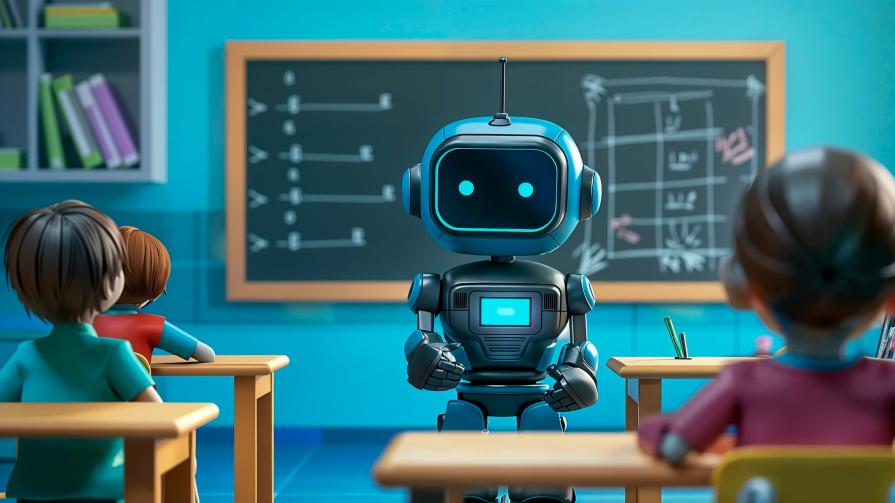While there are debates in different countries about whether neural networks can be allowed into schools at all, China relies not on emotions, but on a systematic approach. They have developed a detailed guide, which clearly spells out who, when, and how generative AI can be used in the educational process. Everything is point by point, with clear logic and understanding of why children, teachers and the country as a whole need it. Steeply? Steeply!

Elementary School: AI Is Banned — But Not Entirely
In China, primary school lasts six years, and all this time children are prohibited from using neural networks to create texts, pictures and other materials on their own. But this is not a "ban for the sake of a ban" – the logic here is simple: the child must first learn to think for himself, build cause-and-effect relationships, analyze information and understand what he is personally responsible for.
At the same time, no one is going to completely isolate children from technology: there will be AI in elementary school, but only under the guidance of a teacher. The task of the teacher is not just to introduce the capabilities of neural networks, but to show their structure, principle of operation, and most importantly, to teach them to distinguish smart help from thoughtless copy-paste.
Seventh Grade and Older: Step by Step to Conscious Use
Starting from the seventh grade, schoolchildren get the green light - they get the right to use AI tools to solve problems. But with one important condition: working with neural networks becomes part of learning, and not a way to avoid difficulties. Teenagers are taught to interact meaningfully with technology, understand its strengths and weaknesses, and distinguish between truth and fiction.
In high school, the scope expands even more: here AI becomes an object of study. Schoolchildren not only use ready-made solutions, but also immerse themselves in how neural networks work inside, learn to develop their own simple models, analyze data, and understand the technical essence of what is happening. This is no longer just "using a neural network for an abstract", but full-fledged digital literacy.

What is forbidden to everyone: both children and adults
There are also general restrictions - regardless of age:
- You can't pass off the work of a neural network as your own. No generated essays, presentations, and answers under the guise of personal effort!
- You can't "cheat" with the help of AI — this is considered a violation of academic honesty.
- You can't use AI without analysis — even if the answer looks logical, it's important to understand: why is it the way it is? If the neural network made a mistake, what then?
In fact, the school should teach that the result is not more important than the process. The main thing is to learn to ask questions, doubt, check and take responsibility for what you do, even if you were "helped" by AI.
New rules for teachers
What is especially interesting is that in China they have not forgotten about teachers. They are also not allowed now:
- Shift the check of grades to AI,
- Process sensitive student data using neural networks,
- Delegate important pedagogical decisions to AI algorithms.
In other words, the authority and responsibility of the teacher remain a priority, the neural network is only an assistant, not a replacement.
Each school in China must develop its own rules for the use of AI, including lists of allowed tools. These lists will be regularly reviewed to ensure that the technology used in the classroom is truly appropriate for age, objectives, and educational level.

Why is it so important for the country?
All this is not just for the sake of a "beautiful picture". The Ministry of Education of China openly says that the country is ready to invest in the development of infrastructure, a large-scale upgrade of school equipment is planned, access to the necessary software, and most importantly, the preparing of teachers themselves to work with AI.
Another big task is to reduce the technological gap between urban and rural schools. China wants every child, no matter where they live, to have access to modern tools and knowledge through school-to-school partnerships and nationwide support programs.
The conclusion suggests itself: extremes do not work. To ban completely means to miss opportunities, to allow without control means to lose the meaning of education. The Chinese experience shows that the most effective thing is to include technology in the process consciously, without shifting responsibility from a person to a machine. This, in turn, requires the readiness of teachers, infrastructure and the desire to develop digital literacy not formally, but for real.












